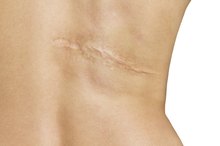What does fact checked mean?
At Healthfully, we strive to deliver objective content that is accurate and up-to-date. Our team periodically reviews articles in order to ensure content quality. The sources cited below consist of evidence from peer-reviewed journals, prominent medical organizations, academic associations, and government data.
The information contained on this site is for informational purposes only, and should not be used as a substitute for the advice of a professional health care provider. Please check with the appropriate physician regarding health questions and concerns. Although we strive to deliver accurate and up-to-date information, no guarantee to that effect is made.
How to Repair Skin Damage From Smoking
Smoking can affect adversely the heart and lungs, and it also can lead to premature wrinkling and aging 2. Skin damage from long-term smoking can result in a “smoker’s face,” which can cause facial skin to appear grayish and lines to develop around the eyes and mouth, according to the University of Montana 2. Tobacco smoke can also have damaging effects on skin’s collagen and elastin. Although it may be hard to repair or reverse the aging effects of long-term smoking, there are some ways you may be able to minimize them.
Cease or limit tobacco use to prevent further skin damage from smoking. Smoking can cause wrinkling and accelerate the aging process of skin because the nicotine in cigarettes is a vasoconstrictor, which can decrease blood flow to organs, such as the skin, according to the University of Alabama at Birmingham Medicine 2. This decrease in blood flow can deprive skin of oxygen and important nutrients, including vitamin A that is necessary for the regeneration of skin cells.
The Best Vitamin for Sagging Facial Skin
Learn More
Improve your eating habits and have healthy foods that are rich sources of vitamins A and C. These foods can include carrots, broccoli, green vegetables and oranges. Smoking can affect the body’s ability to absorb these two vitamins, which are important for skin protection, according to the website Simply Anti Aging 2. Keep the body hydrated by drinking sufficient quantities of water and avoid alcoholic or caffeinated beverages.
Take vitamin A and C supplements to ensure you are getting an adequate intake of these nutrients. A healthy diet, taking supplements and using anti-aging skin care products may help to repair some of the damage caused by smoking, suggests the website Simply Anti Aging 2.
How to Stop Acne Scarring
Learn More
Establish good skin care practices by cleansing and moisturizing your skin daily. Clean your face with a deep pore cleanser and then use a moisturizer that is formulated for dry skin.
Apply an anti-aging topical product that contains vitamin A or vitamin C, which are antioxidants. Use a cream or lotion that has alpha-hydroxy acids to reduce the appearance of fine lines or wrinkles. Alpha-hydroxy acids are useful products that help to exfoliate the skin. While many of these products can be non-prescription, others, such as the topical retinoid called Retin A, can require a prescription from a doctor.
See a dermatologist when skin damage from smoking causes deep wrinkling. Although many topical products can help to minimize the appearance of superficial wrinkles, rejuvenation skin treatments may be necessary to address deep wrinkling problems. Depending on the degree of wrinkling, treatment options can include dermal fillers, Botox, chemical peels or dermabrasion. A doctor or licensed professional should perform these procedures.
Tips
Although wrinkles may result from smoking, there are other ways that smoking also can affect the skin.








